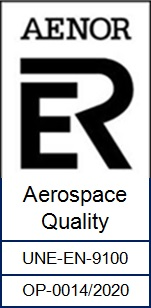Continuous improvement of manufacturing processes leads to nearly 50% cost reduction on wireless network diplexer components.
Challenge:
Our customer, a leader wireless telecommunications OEM required reducing the costs of its diplexer product line in order to maintain its competitiveness.
Solution:
Working collaboratively with the customer to improve product design and manufacturing processes, in combination with manufacturing increased efficiencies resulted in substantial cost reduction. A continuous process improvement program yielded the following achievements:
- Developed an imaginative and orderly tombstone fixture design which allowed for rapid load/unload while increasing batch efficiency and reducing component set-ups required from 3 to 1.
- Improvement resulted in 7.9% cost reduction.
- Established inspection protocol utilizing a multi-part simultaneous set-up which allowed for meticulous 100% first article inspection with no negative impact on plant production efficiency.
- Improvement resulted in 1.2% cost reduction.
- Replaced the standard rectangular material blanks with a streamlined and low-waste alternative as a result of designing a pair of custom aluminum extrusions.
- Improvement resulted in 5.5% cost reduction. More tightly controlled tolerances allowed for further streamlining of the pair of custom aluminum extrusions during a time when commodity market pricing was high.
- Improvement resulted in 0.9% cost reduction.
- Increased set-up efficiency, reduced inventories, and simplified process for production personnel by standardizing tooling libraries across part number and band derivatives
- Improvement resulted in 5.1% cost reduction.
- Dramatic efficiency improvements were realized, as a result of investing in a cutting-edge CNC milling machine capable of very high speed tool changes and rapid rates with maximum spindle speeds of 15,000 RPM’s.
- Improvement resulted in 6.7% cost reduction.
- Design changes were implemented for 3 features as a result of collaborative work customer and engineering staff to analyze the expected cost savings of an array of potential design changes.
- Improvement resulted in 6.7% cost reduction.
- Programmers continually shaved seconds from CNC programs by maximizing feed rates, optimizing choice of tool, minimizing tool path lengths, and establishing smart program home positions.
- Improvement resulted in 4.8% cost reduction.
- Implemented additional design changes to provide for faster post machining assembly and tuning.
- Improvement resulted in 1.3% cost reduction.
- Realized economies of scale by maximizing the utilization of production hours through strategic diversification of products
- Improvement resulted in 1.8% cost reduction.
- Significantly reduced cycle times and WIP inventories, while maximizing work-center utilization. Modeling a variety of scheduling and production floor scenarios using sophisticated ExtendSim software provided a vehicle for analyzing toggled variables in virtual reality.
- Improvement resulted in 3.4% cost reduction.
- Further minimized average required set-up time, by working with simulation data to develop real-world what-if scenarios that targeted the most efficient production grouping possibilities
- Improvement resulted in 1.0% cost reduction.
Result:
A series of noteworthy improvements from our experienced manufacturing professionals resulted in a component cost reduction of nearly 50% over a period of three years. Continuous process improvement at Olympic Precision Machining resulted in increased efficiency and reduced costs, thus guaranteeing product competitiveness.

